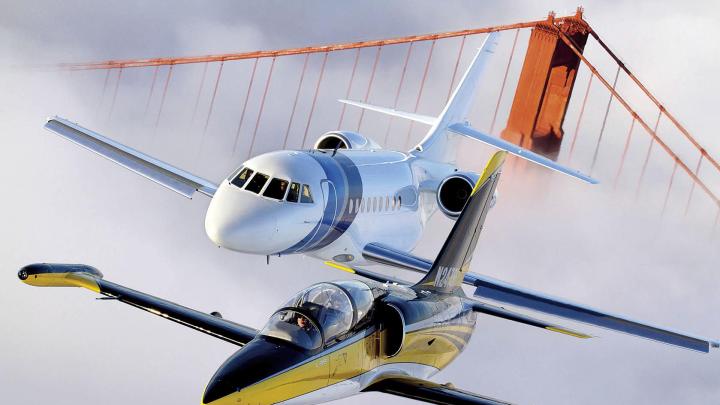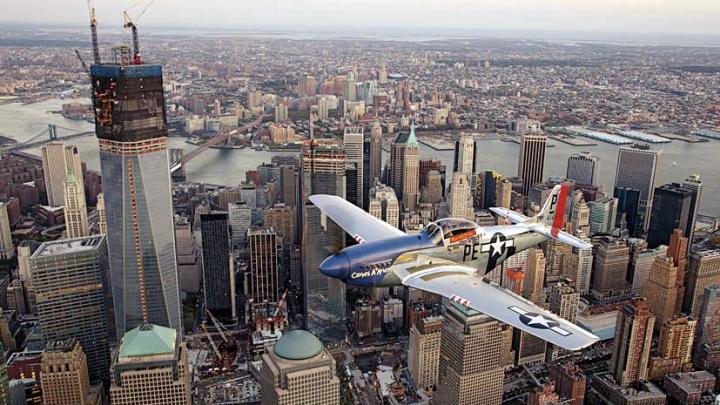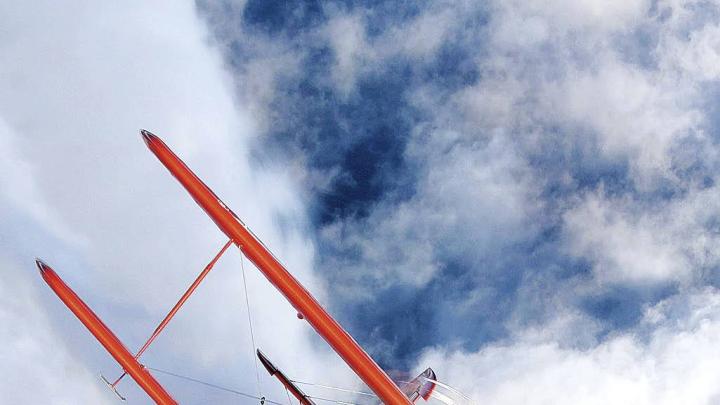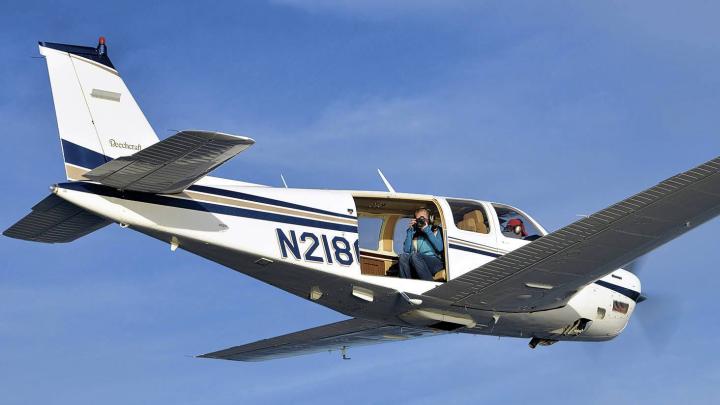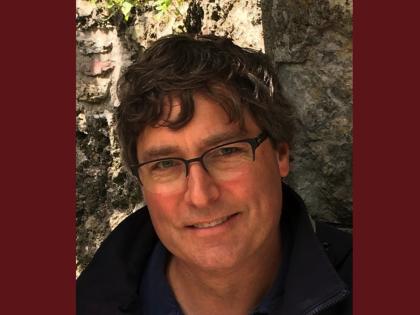The images have so much air in them: high above the ground, planes cavort in open space, seemingly at play. They fly astonishingly close to the viewer, at times only 20 feet away from the camera lens. Backdrops—bridges, cities, deserts, rivers, forests—fall away majestically, far below. This is air-to-air photography, pictures that only someone flying in another plane could take. Many have appeared in Plane & Pilot magazine; its editor, Jessica Ambats ’95, belongs to the small cadre of those who make such pictures. Her airborne shoots typically last about an hour, with specially trained pilots maneuvering the planes. “Every detail is planned,” she says. “Usually we end up flying in circles for the whole hour.”
What’s tricky about such pictures is that both camera and subject are in motion (typical airspeeds are around 150 knots, or about 172 miles per hour), so there’s not much wiggle room on timing the shutter release. Another element is the setting. “I work very hard on backgrounds,” Ambats explains. “I’m choosy—I want clean, uncluttered backgrounds, no roads or telephone poles.” She also tries to match a background with the featured aircraft: she might position a private jet that flies to business meetings over a city skyline, or place an older aircraft like an open-cockpit biplane above sand dunes.
Ambats (www.jessicaambats.com) is a trained pilot herself, with instrument, multi-engine, and seaplane ratings. As a 12-year-old, she flew in a private plane with a family friend, and “during the flight, she let me make left and right turns with the yoke,” Ambats recalls. “It was my first exposure to the idea that regular people can fly airplanes—I’d thought it was only for the military.” After college, she went up with a flight-instructor friend, spending the afternoon hopping around small airports in the New York and New Jersey area and discovering “general aviation,” the term for non-commercial civilian flying. (Plane & Pilot is one of the three biggest general-aviation magazines.) Ambats began flying lessons at Andover Flight Academy in Andover, New Jersey, and finished in California, having moved to Los Angeles in 2004 to work for Pilot Getaways magazine, where she took up air-to-air photography. Today she likes to fly a Cirrus single-engine propeller plane for pleasure. (She rents these craft, which cost around $480,000 each; private jets fall in the $3-million to $10-million range.)
For shoots, she hires only “formation pilots,” specialists trained to fly in close formation with other planes: some are former Blue Angels or Thunderbirds. With exposures from ranges as close as 20 to 150 feet, this kind of expertise is essential or it’s “too risky,” she says. “It takes finesse to move an airplane exactly 10 feet.” During the shoot, she constantly feeds both pilots directions to line up the planes properly with each other and the background: “Biplane, 15 feet higher.” Even such a small change can drastically alter the composition.
Ambats usually works from a Beechcraft Bonanza with the rear doors removed. (She does not shoot through glass.) A harness holds her securely in place. Working with a handheld high-end digital camera, she exposes several hundred images per flight. Lenses with image stabilization can help, and at times she deploys a gyroscopic camera stabilizer, “if it’s a bumpy flight.”
